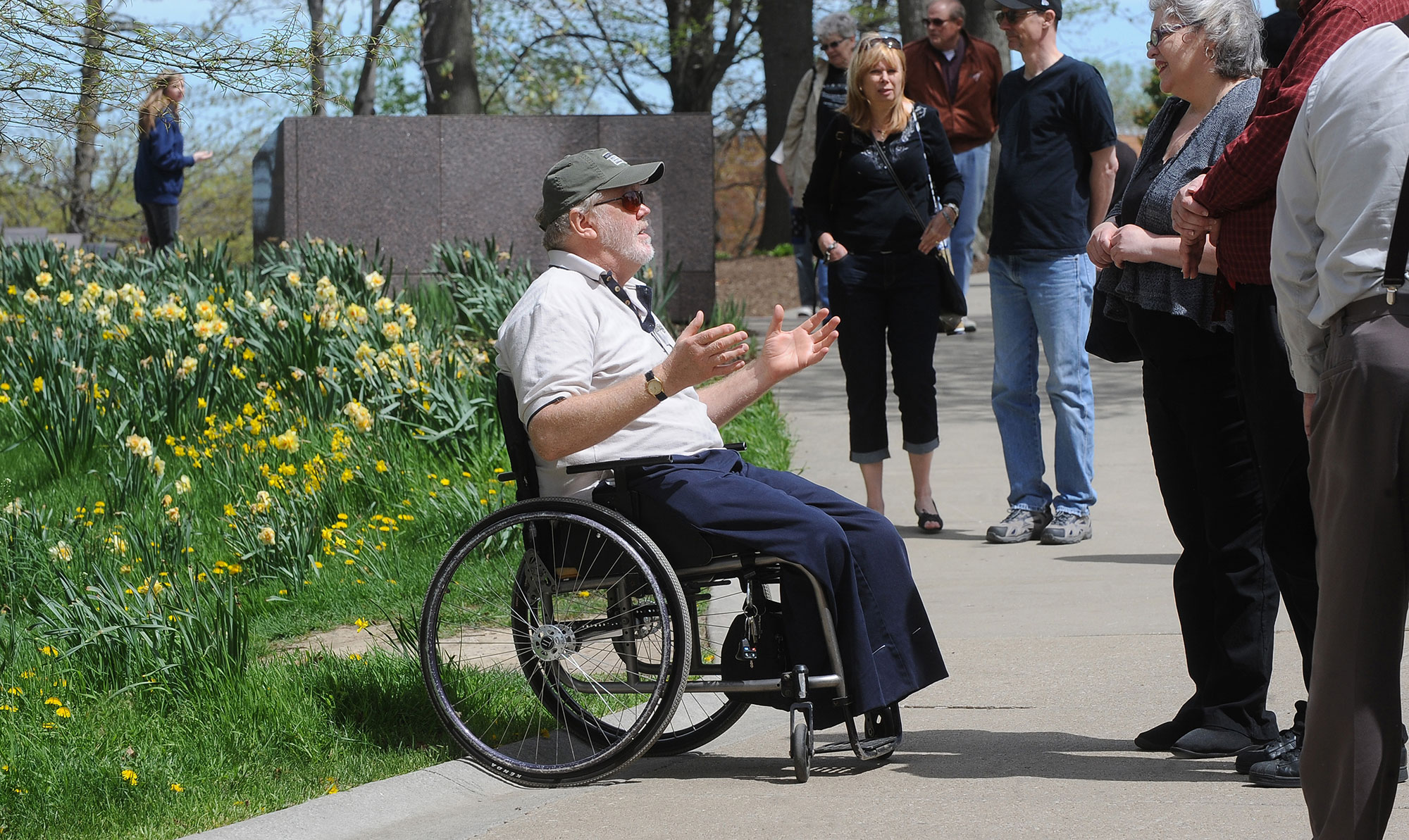Stories from Survivors
Image


Dean Kahler
Dean Kahler was one of nine students shot and wounded on May 4, 1970 – paralyzed for life with a spinal injury. As a 19-year-old freshman, he adapted to a wheelchair, returned to Kent State to finish his degree and pursued a career of public service. He secured access for disabled people to public facilities across Ohio. “With a little bit of work, you, too, can do something about the political environment,” says Mr. Kahler. He remains a community volunteer in his hometown of East Canton, Ohio.
“Ohio” by Crosby, Stills, Nash & Young
Neil Young wrote the lyrics to "Ohio" after seeing Life magazine photo coverage of the Kent State shootings. Crosby, Stills, Nash & Young recorded it on May 21, 1970, less than three weeks after the shootings. "Ohio" was rush-released and got immediate, heavy radio play, especially on FM "underground" stations. "Ohio" became a counterculture anthem and has stood the test of time. The song was inducted into the Grammy Hall of Fame in 2009.


Laura Davis, Ph.D.
A Kent State freshman in 1970, Laura Davis, Ph.D., witnessed the shootings on May 4. In later years, she and Carole Barbato, Ph.D., created the May 4 Visitors Center and Walking Tour with input from a far-ranging community. At the same time, Dr. Barbato, Dr. Davis and Jerry M. Lewis, Ph.D., helped Mark Seeman, Ph.D., place the site on the National Register of Historic Places. Using that work as a base, Dr. Davis and Dr. Seeman, along with Brad Keefer, Ph.D., Mindy Farmer, Ph.D., and Lori Boes, ensured that the site was designated a National Historic Landmark in 2016.
Alan Canfora
Alan Canfora was shot in the wrist May 4. He recovered to become a lifelong “student organizer and political activist.” He is impressed by today’s young people who advocate change: “They urge people to vote! My generation, we didn’t do that.” Mr. Canfora is also heartened by Kent State’s determination to remember, reflect and seek renewal: “The university is embracing its duty at long last.”


Tom Grace - Photo Courtesy of Christian Bobak, Photographer
Thomas M. Grace
Thomas M. Grace, Ph.D., was one of the students wounded on May 4, 1970, at Kent State. Since completing his Ph.D., he has lectured and taught at colleges in Western New York. Currently, he is a part-time assistant professor of American history at Erie Community College, State University of New York. He specializes in the protest movement in the 1960s and is author of “Kent State: Death and Dissent in the Long Sixties” (2016). He brings a unique perspective as a history scholar to the contextualization of 1960s dissent.
Jerry M. Lewis
Jerry M. Lewis is a Professor Emeritus of Sociology at Kent State University. Serving as a faculty marshal in 1970, he witnessed the events of May 4, 1970 firsthand. He has devoted his time to researching, memorializing and lecturing since the events took place. Dr. Lewis co-authored an analysis of the May 4 shootings with Thomas R. Hensley, Ph.D., titled Kent State and May 4th A Social Science Perspective. Dr. Lewis was also one of the four co-authors of the application to add the May 4 site to the National Register of Historic Places, which was approved in February 2010.

Image


Chic Canfora
Chic, an eye-witness and survivor of the Kent State shootings on May 4, 1970, was one of 24 students indicted by the Ohio Grand Jury. She earned her PhD at Kent State, where she teaches in the School of Journalism. Chic is stalwart advocate for May 4 remembrance and connecting the lessons of the anti-war movement to emerging movements today, including Black Lives Matter and March for our Lives
